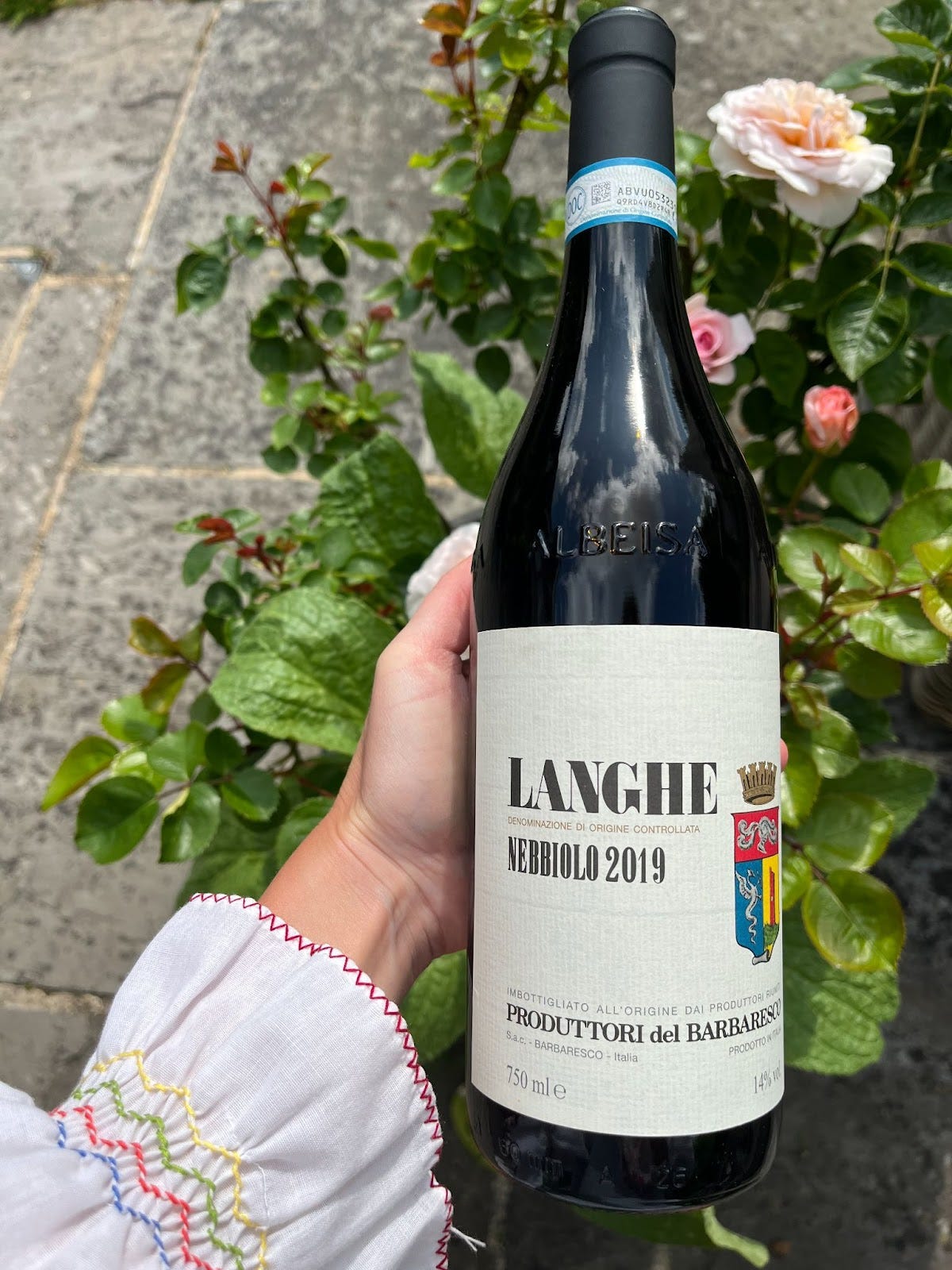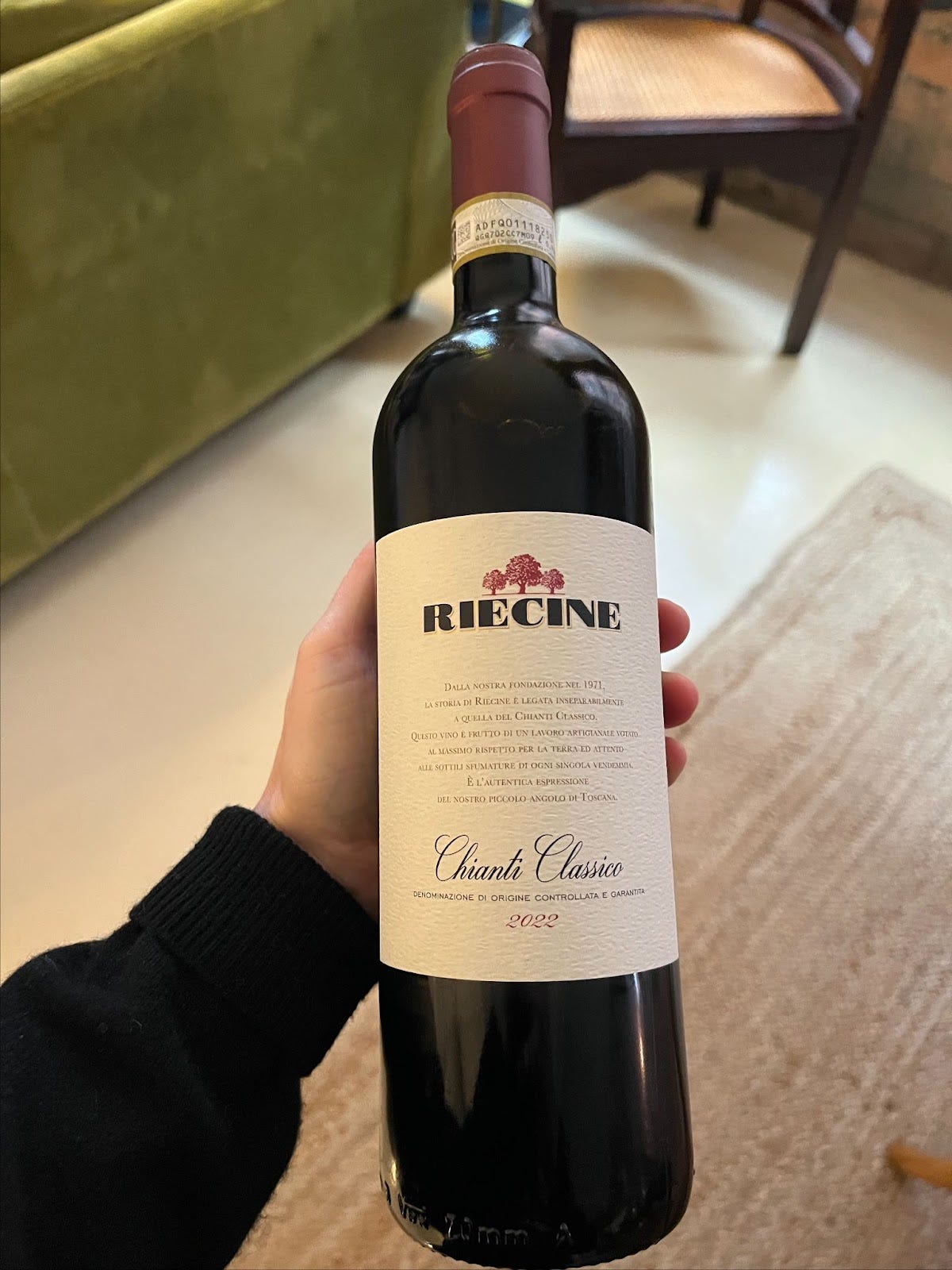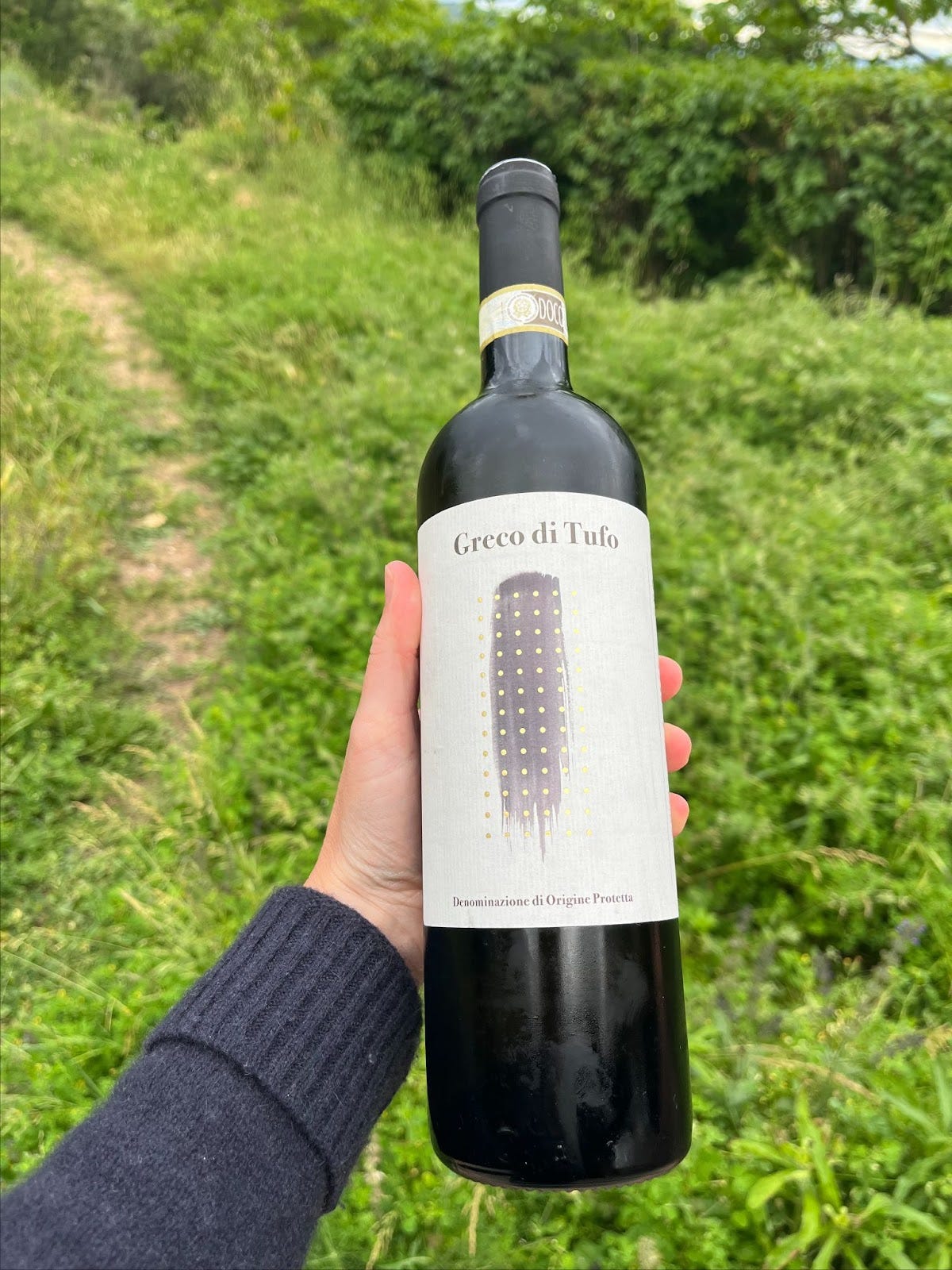Take a walk on the wild side - Italy's indigenous grape varieties.
...and because there are so many, I've highlighted my favourites.
Please do me a favour and make it your mission to sign up one of your friends today. I would be very grateful to see The Little Grape grow! If you forward this newsletter on, your friend can subscribe by typing in their email below.
It’s safe to say you would’ve been living under a rock if you haven’t heard of Chardonnay, Sauvignon Blanc, Pinot Noir and Cabernet Sauvignon. These are some of the more famous grapes you see pretty much everywhere. I want you to think of these as the international varieties. They are planted all around the world, favoured by many growers due to their global reputation. Making wine from ubiquitous grapes usually guarantees sales so it’s a no brainer. Why faff about with a grape no one has heard of when you can make a perfectly acceptable Chardonnay? You can sell to a wider audience with tourists feeling more comfortable with an international grape compared to a grape they can’t pronounce!
I now understand why indigenous varieties have been neglected. They simply were not commercial. While international varieties are generally, and I mean generally, easy to grow, indigenous varieties are usually found in tiny patches on mountainsides or arid, unpopulated fields. So, you have less grapes, equalling less bottles to sell. Chuck this conundrum in with the fact that drinkers usually like to stick with what they know and you can see why indigenous varieties have been stuck in the mud.
However, in recent years, we have seen many wine producers return to their roots. The desire to make artisanal wines that speak of place, alongside consumer interest in local produce has sparked this revolution from both sides. I hold a lot of these international varieties close to my heart but there are so many other grapes that deserve your attention. It’s time we looked at some brilliant indigenous grape varieties.
I’ve started with Italy because this country is absolutely brimming with its own varieties. There are over 500, which would take five years to explain so I thought I’d highlight my favourites. Some of these might be familiar, some not so much. In any case, this is just a snapshot - there are so many more grapes to explore.
I want to do something similar with Portugal and Greece because these two countries have plenty of indigenous varieties. Seeing growers and winemakers finally promote their own grapes is such a positive step so let’s dig in.
Red Grapes:
Nebbiolo- This grape is the most patriotic. It’s a grape that refuses to grow anywhere else but Italy (Australia has tried, with limited success). This grumpy grape favours the fog and hills of Piedmont, Northern Italy, and thankfully producers have always embraced it. They don’t have much choice because by law, if you want to call your wine Barolo or Barbaresco, it has to be made with 100% Nebbiolo. You’ll find cheaper alternatives from the larger Langhe region (try this). Nebbiolo is characterised by robust tannins (the drying sensation in your mouth) and flavours of tea leaves, roses and strawberries. It’s beautifully pale in colour but it can be hard work. Nebbiolo would be one of my Desert Island *Wine* Disc choices. I’d have to take a bottle of Barolo with me to the island.
Sangiovese- You can’t think about this grape without being transported to the cypress tree lined hills of Tuscany. When you see Chianti, Brunello di Montalcino or Vino Nobile de Montepulciano on a wine label, you’re dealing with Sangiovese. The main flavours I tend to find are sour red cherries, redcurrants and cranberries. The grape usually produces wines with high acidities and grippy tannins. It has some weight too, making it a great all rounder. You can enjoy Rosso di Montalcino early while it’s fruit heavy - save the brooding Brunellos for later. Brunello di Montalcino is broad shouldered and needs time in the bottle to mellow. Unlike Nebbiolo, Sangiovese is more of a chameleon, you’ll find it grown all over Italy (Emilia Romagna, Umbria), but its best iterations are made in Tuscany.
Frappato- This grape is more niche than the above two but it is definitely a grape to look out for. This red grape thrives in Sicily and produces elegant, perfumed red wines that are pale in colour. Punnets of red cherries and strawberries spring to mind. Frappato wines are delicious when chilled and if you’re looking for an easy going red, you’ll love Frappato. I’d drink it all the time if I could afford it but because there isn’t much of it in the UK, you have to pay up. My favourite producers making great Frappato are Ariana Occhipinti and COS.
Primitivo- Primitivo is known as Zinfandel in the USA but its life story started in Italy. Primitivo is a full throttle red grape - it takes no prisoners. Commonly grown in Southern Italy, this grape can handle the heat of this area. It’s incredibly hot and dry in regions such as Puglia and Campania so you need a grape with protective thick skins. However, Primitivo does need help. If it’s left to its own devices, you’ll find yourself whacked over the head by a 15%abv fiery monster. It needs to be picked early and fermented at cooler temperatures. These measures will prevent the grapes from bulking up and becoming too jammy. Primitivo leads to big wines, which are heavy with blackcurrant fruit, dried meats and herbs. It’s not my favourite but I’ve noticed its popularity has increased as more people travel to Puglia. Tourism is a huge driver for sales of indigenous grape varieties.
Aglianico- Just as Primitivo is Puglia’s mascot, Agliancio is Basilicata’s. This region borders Puglia and Calabria so again, we find ourselves in a very hot and dry area. Not many grape varieties can flourish here but Aglianico does just fine. If you thought Primitivo was big, you haven’t met Aglianico. The colour this wine produces is so deep, almost inky purple so you know it’s going to be powerful. This grape is known to produce wines that can age for decades, which led to the name Barolo of the South. I think this is a bit of a stretch because I don’t find the layers of perfume and floral notes in Aglianico but it sure does have the tannins to age. Two names to look out for on labels are Taurasi (Mastroberadino’s Radici Taurasi is epic) and Aglianico del Vulture. You’ll find balanced but expressive examples here but please take heed of my warning - Aglianico wines are not for the light-bodied wine lover.
White Grapes:
Arneis- situate yourself in Piedmont (if you haven’t been, here is my rough guide). For decades Arneis was pulled up and discarded in favour of the more famous and profitable red grape varieties (Nebbiolo is the perpetrator here). This has since changed because many of the winemakers realised it would be nice to have a white wine in their portfolio. We have balance to thank, so now when you go to Piedmont, you’ll see Arneis on every wine list. I’m not going to pretend it’s the most exciting and complex variety but sometimes a wine that doesn’t make you think is just what the doctor ordered. Crisp, stony with flecks of nuts, this is a great dinner party wine as it’s versatile and usually very cheap. Marcarini’s Arneis is one to have a stash of.
Garganega- I’ll forgive you for scratching your head with this one because you’ll be more familiar with the word Soave than Garganega. Brought into the British consciousness by Pizza Express, Soave has always been a presence on their wine lists. You can’t underestimate Pizza Express’s impact in introducing Italian wines to the UK! On their menus were names such as Gavi, Soave and Chianti, which helped the UK market acclimatise to Italian wine. Sadly, Soave’s reputation has remained static, unlike Pizza Express’ prices. The grape needs a rebrand and maybe I’m the person to do it! I’m a big fan of Garganega. I love the waxy texture and almond flavours. Garganega is more unusual than Sauvignon Blanc and less vegetal. It also makes a nice change from toasty, buttery wines. Pieropan and Inama are the names to look out for. Pieropan make a well-priced entry level Soave alongside their single vineyard wines (La Rocca is my favourite).
Falanghina- this white grape is grown all over Campania, right down in the south of Italy. It’s an impressive variety in that it remains fresh and clean while growing in seriously hot temperatures. The main flavours range from white peach and almond to lemon zest and orange peel. Similarly to Garganega, Falanghina is defined by its oily texture yet I find it heavier.. It’s an aromatic variety that will remind you of summer and works wonderfully with fish. Normally it’s ridiculously cheap so a good bottle for midweek drinking. This Falanghina would be an excellent summer wine and perhaps a different option for your ‘everyday white wine.’
Greco- this grape is the least well known of the pack - I haven’t come across much Greco in the UK. Greco is mainly grown in Southern Italy and as the name suggests, this grape originated in Greece. Greco was planted all over Italy but it is in the south where it found fame. Calabria produces zesty Greco wines but the best examples come from Campania. There is one DOCG (Italy’s highest qualification for wines) in the area, Greco di Tufo, which you’ll see on labels. This might seem confusing but all you need to know is ‘grape from somewhere.’ You’ll see this format across all Italian wines such as Dolcetto d’Alba and Rosso di Montalcino. The area of Tufo has volcanic soils, which leads to stoniness in Greco wines. Having tried one such bottle recently, I found flavours of freshly cut grass, white blossom, cactus, elderflower and pear. What held this particular bottle back was the total lack of acidity. For someone who loves vivacity in wine, this wine died a bit in my mouth. I’m not writing Greco off but it’s got a lot to prove.
See you next time for a taste of more indigenous grape varieties!
It's in my free time that I research interesting grape varieties, taste new wines and travel to wine regions. My mission is to keep sharing these adventures and discoveries with you for as long as possible through this newsletter. If you’d like to support me, you can donate any amount via the button below. I’d be forever grateful.







Loved this